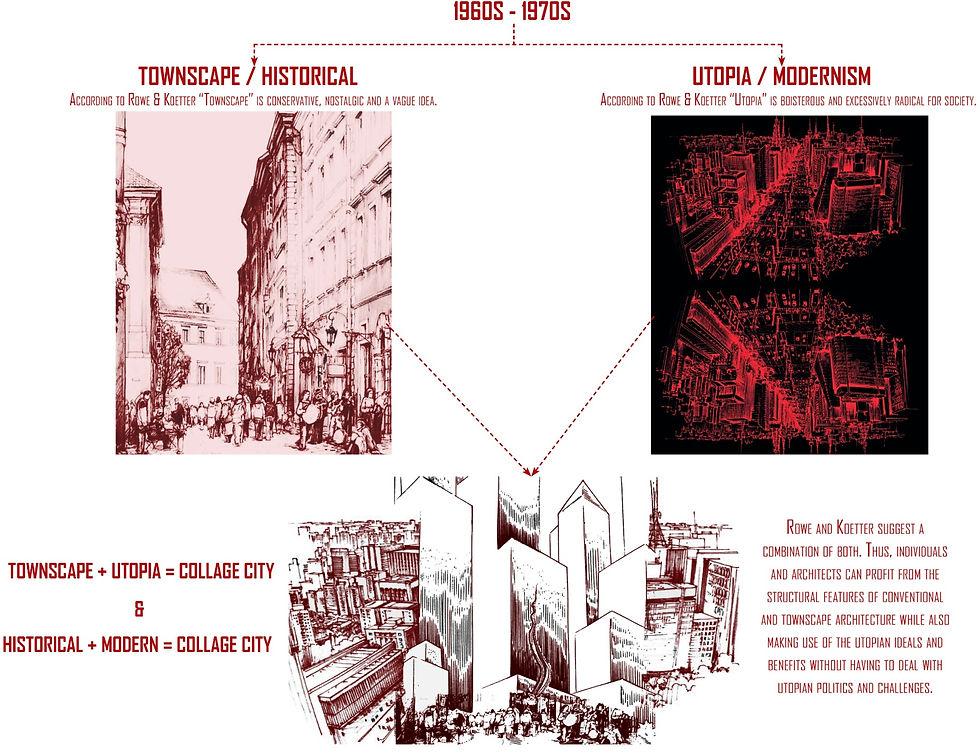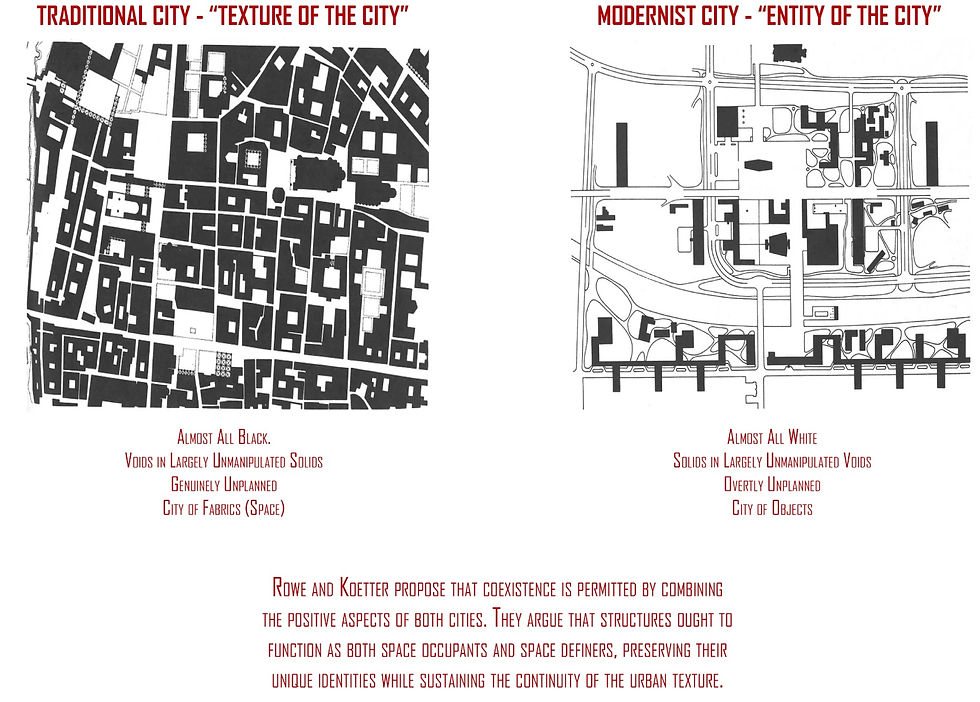Delving into the Collage City Theory: A Journey through London
- Rhenua Ahimie

- Nov 6, 2023
- 3 min read
Updated: Apr 25, 2024
Collage City, written by Colin Rowe and Fred Koetter, offers a critical examination of the ideas, motivations, and limitations of modernist city design through research on the opposition’s attempts to address the ensuing problems. In contrast to other historical approaches of the time, the text focuses on an urban planning theory that uses collage as an artistic medium to move away from the authoritarian perspective and towards the “fragments” of the city. Although planning theory did not view cities as a whole design until the 1950s, Collage City’s handling of urban fragments subverts popular conceptions of urban design from the 1970s. (Holmik and Muminovic, 2023).
The text examines a number of views in order to establish the theory that a collage technique may be the most effective means of overcoming the problems created by modern urban designers and their utopian ambitions.
The text starts out by addressing the issues with contemporary urban plans and the reasons behind their failure. The goal of the modernist movement was to construct a new utopian city and create a new beginning. However, Rowe and Koetter (1978:3) claim that the perpetual fluctuation “between a retarded conception of science and a reluctant recognition of poetics” is what led to the collapse of these urban planning concepts.
Furthermore, Rowe and Koetter argue that utopia should be utilised as a metaphor rather than a prescription, supporting utopian poetics over utopian politics. To make this distinction (Figure 1), they employ a fragmented method that they characterise as a “ means of permitting us the enjoyment of utopian poetics without our being obliged to suffer the embarrassment of utopian politics” (Rowe and Koetter, 1975 as cited in Larice and Macdonald, 2013:197).

Figure 1
Another issue with contemporary urban planning is that modern cities are becoming the antithesis of traditional cities. As Rowe and Koetter (1978:62) noted, the modern city is “an accumulation of solids in a largely unmanipulated void” while the traditional city is “an accumulation of voids in a largely unmanipulated solid”. (Figures 2).
Rowe and Koetter provide Collage City theory as a solution to the issues with contemporary urban design. This theory approaches urban design by using bricolage, fragmentation, and interpretative metamorphoses to create a network of functional pocket utopias (Figure 3).
The result of the proposal, according to Rowe and Koetter would be a city that combined elements from different architectural periods. It would draw inspiration from successful models of urban design found in other places and incorporate elements that were scientific, picturesque, ancient, and modern in addition to elements that might be reasonable and elements that were chaotic (Figure 3).
Collage cities would offer utopian poetics, but by stacking and contrasting parts into a whole, rather than taking an authoritarian, blank-slate approach, they would also free themselves from the unchangeable finality of utopian politics. An adaptable postmodern collage of memories, altered environments, reinterpreted meanings, and metamorphoses that gives the city the ability to regenerate itself, interpret itself, and construct new identities out of borrowed fragments (Figure 3).
The Collage theory maintains that traditions drive the evolution of cities and architecture rather than acting as symbols of social organisation. Moreover, in today’s urban communities, the “collage” approach promotes variety and coexistence. Through collage city urban identities and heritages can be critically analysed and can be employed to encourage urban planners to keep historical architecture in mind when designing a project so as not to repeat the mistakes of the past. Using collage city to critically analyse urban identities and heritages can allow urban planners to gain a greater understanding of historical architecture when planning projects leading to a better urban community.

Figure 2 -Medium






Comentários